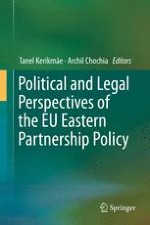2016 | OriginalPaper | Buchkapitel
Eastern Partnership and Family Law
verfasst von : Kristi Joamets
Erschienen in: Political and Legal Perspectives of the EU Eastern Partnership Policy
Aktivieren Sie unsere intelligente Suche, um passende Fachinhalte oder Patente zu finden.
Wählen Sie Textabschnitte aus um mit Künstlicher Intelligenz passenden Patente zu finden. powered by
Markieren Sie Textabschnitte, um KI-gestützt weitere passende Inhalte zu finden. powered by
